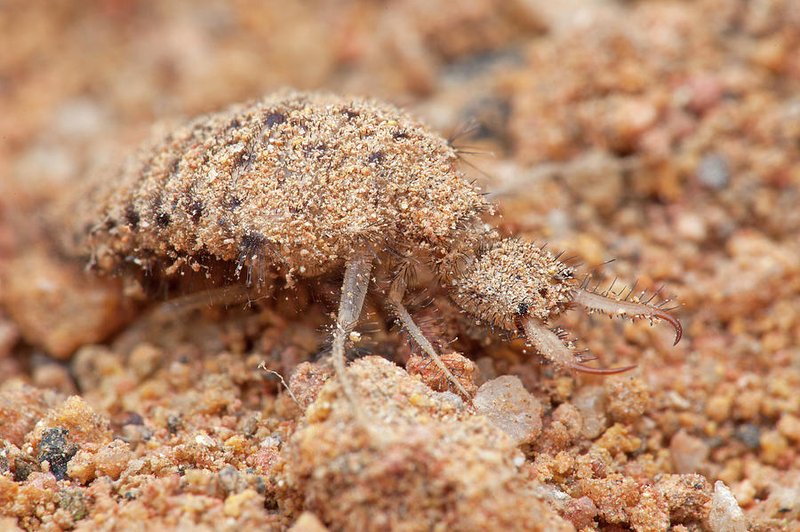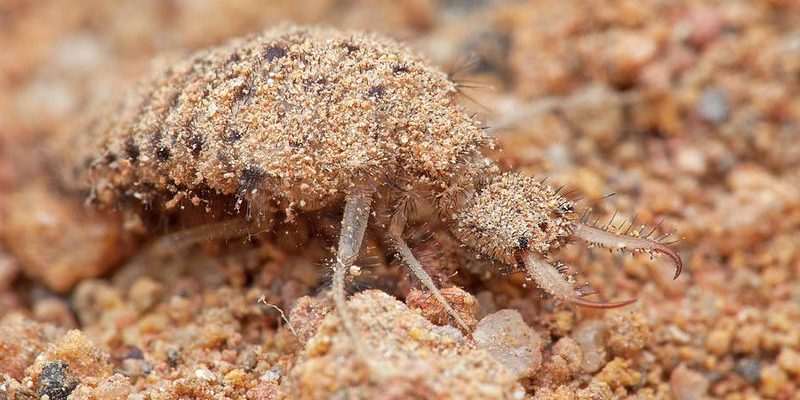
So, why should we care about ant lion larvae? For starters, they hold an important place in the food web, serving as both predator and prey. Understanding their role not only sheds light on their unique behavior but also helps us appreciate the intricate web of life they’re a part of. Let’s dive deeper into the ecological importance of the ant lion larvae species, and I promise, it’ll be worth your while.
What Exactly Are Ant Lion Larvae?
Ant lion larvae belong to the family Myrmeleontidae, a group of insects known for their predatory nature in their larval stage. Unlike the adult ant lions, which resemble dragonflies and are more passive, the larvae are the true hunters. They spend most of their lives hidden in sandy or loose soil, creating characteristic funnel-shaped pits—think of them as little sand traps!
These larvae can be quite impressive in size, reaching lengths of up to 2 inches. They have large, sickle-shaped jaws that they use to grasp and hold onto their prey, which mainly consists of ants and other small insects. It’s quite fascinating to see how they lie in wait, camouflaged against the sand, ready to spring into action.
Here’s the thing: these larvae can go through several molts before they mature into adults, lasting up to a year or more in this stage! This lengthy developmental phase allows them to hone their predatory skills and gather energy for their transformation into adults.
Ant Lion Larvae as Natural Pest Control
One of the most significant roles that ant lion larvae play is as natural pest controllers. By preying on ants and other small insects, they help keep these populations in check. This is especially important in ecosystems where certain insect populations can explode and lead to imbalances.
You might be wondering how this affects your garden or local environment. Well, when ant lions thrive, they help reduce the numbers of pests that can damage plants. This makes them incredibly beneficial to gardeners and farmers alike, as they naturally contribute to controlling crop-eating pests.
Plus, their method of trapping insects is quite efficient. Once an unsuspecting ant falls into the pit, it’s often too late for them—these larvae are quick and deadly. This natural predatory behavior not only helps balance ecosystems but also minimizes the need for chemical pesticides, which can harm other wildlife and the environment.
Impact on Soil Health
Ant lion larvae also contribute to soil health in several key ways. As they dig and create their sandy pits, they’re aerating the soil. Think of it as nature’s own gardening method. When the soil is aerated, it allows air, water, and nutrients to penetrate deeper, which benefits plant growth and overall soil vitality.
Moreover, their feeding activities help break down organic matter. When they consume insects, they contribute to nutrient cycling in the ecosystem. This process enriches the soil with essential nutrients that plants need to thrive. So, while they may seem small and insignificant, their role in promoting soil health is quite substantial.
In addition, the presence of ant lion larvae can indicate a healthy ecosystem. If you spot these little predators, it usually means the environment has a balanced food web and good soil quality. It’s like they’re little indicators of ecological well-being!
Role in Biodiversity
Biodiversity is a cornerstone of a healthy ecosystem, and ant lion larvae play a part in maintaining it. By preying on various insect species, they help control populations, allowing other organisms to flourish. This balance is crucial for a vibrant ecosystem.
When we consider biodiversity, it’s also essential to think about the food chain. Ant lions are a part of a larger network of species interactions. They provide food for birds and other predators when they eventually morph into adults. This further integrates them into the food web, emphasizing their importance in the overall ecological landscape.
You could say that ant lion larvae are the unsung heroes of insect diversity. By helping to regulate insect populations, they allow for a variety of species to coexist, which is vital for resilience against environmental changes.
The Threats Facing Ant Lion Larvae
Unfortunately, ant lion larvae face several threats that can compromise their populations. Habitat destruction is one of the biggest issues. Urban development, agriculture, and pollution can alter or eliminate their natural habitats, leading to a decline in their numbers.
Additionally, the use of pesticides not only targets harmful insects but can also inadvertently harm beneficial species like ant lion larvae. When these larvae are affected, it can disrupt the balance of pest control they naturally provide.
Understanding and mitigating these threats is essential for preserving their populations. Doing so not only safeguards the ant lions but also helps maintain the ecological balance that depends on their presence.
Ant lion larvae might not be the most glamorous creatures, but their ecological importance cannot be overstated. From natural pest control to enhancing soil health and supporting biodiversity, they play vital roles in maintaining healthy ecosystems.
By fostering an understanding of these fascinating little hunters, we can appreciate the interconnectedness of all species and the delicate balance of nature. So, next time you see a sandy pit, take a moment to recognize the ant lion larvae behind it and the important work they do. They’re truly nature’s subtle champions, and protecting them is crucial for our environment.

